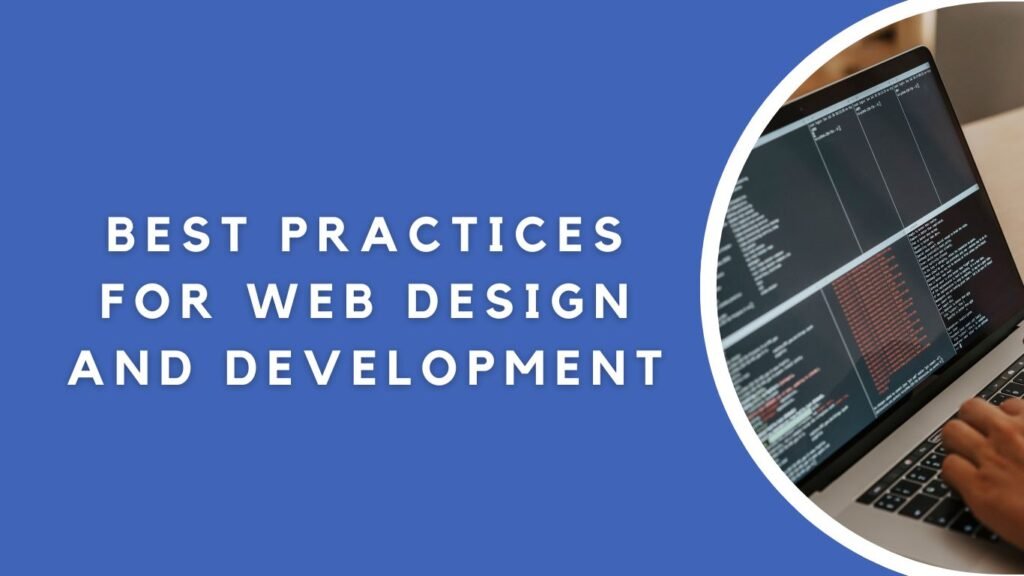Your website is the most valuable tool in your digital marketing toolbox. By following proven practices for web design, and optimizing it effectively, your website can become a powerful source of leads and sales for your business.
In this blog post, we’ll study the key elements that form a successful website design, as well as provide strategic guidance to help your site convert at its highest potential.
Understanding Your Target Audience
All successful marketing strategies start by understanding the target audience and studying the competitors. Conducting user research and analysis allows you to gain insights into their preferences, behaviors, and needs. Creating user personas, fictional representations of your ideal customers, helps you better understand their motivations, goals, and challenges. This understanding serves as a website to optimize your website design and content.
User-Centered Design Principles
Implementing Intuitive Navigation
Intuitive navigation, as well as structured information architecture, are both important elements to take into consideration in your website. Organize content logically and make it user-friendly, so visitors can find what they’re looking for right away. Clear and concise menus, dropdowns, and navigation bars help users scroll the website effortlessly.
Creating a Visually Appealing Design
Eye-catching design contributes to a positive user experience. It’s important to choose the right color palettes, typography, and visual components that complement your brand identity. Users navigate and appreciate the website more quickly when design components like buttons, headlines, and space are consistent. Apart from drawing attention, a well-designed interface boosts user engagement and professionalism.
Optimizing Website Responsiveness
With the increasing use of mobile devices, optimizing website responsiveness is a must. People use their phones or tablets all the time to interact online and even scroll on websites. Responsive design ensures your website adapts to different screen sizes and resolutions, providing a consistent, user-friendly experience across devices. So, while you consider optimizing the website, never skip this step! Also, don’t forget to conduct testing once in a while to ensure everything works correctly. You don’t want potential visitors to leave the website due to a poor mobile experience!
Incorporating User-Friendly Forms and Calls to Action
User-friendly forms and strategically placed calls to action (CTAs) are key elements of effective user-centered design. Forms should be clear, simple, and well-labeled to encourage user interaction. Features like autofill, progress indicators, and error validation help streamline the form submission process. Similarly, well-designed and compelling CTAs prompt users to take desired actions, such as signing up for a newsletter, making a purchase or a service, or requesting more information.
Compelling Content Strategy
Creating Engaging and Relevant Content
Capturing visitors’ attention is not easy, and a good content strategy is required. This usually involves creating engaging and relevant content that aligns with the needs and interests of your target audience. By understanding their pain points, aspirations, and preferences, you can create the right content to match their expectations. Fortunately, there are many options to share value, and those include informative articles, blog posts, videos, infographics, or any other form of content.
Using Persuasive Copywriting Techniques
By captivating headlines, persuasive language, and effective storytelling, you can capture the attention and emotions of your audience. Highlighting your products’ or services’ benefits and unique selling points persuades visitors to choose your brand over competitors. Adding social proof, testimonials, and case studies further increases credibility and trust. The art of persuasive copywriting lies in understanding your audience, addressing their needs, and crafting compelling messages that inspire action.
Incorporating Visual Elements and Multimedia Content
You can never go wrong with visual elements and multimedia when it comes to improving your website. Images, illustrations, videos, and interactive elements break up text-heavy content and create a visually stimulating experience for visitors. People want to feel emotions, and visuals are what evoke them, as well as make complex concepts easier to understand. Infographics and data visualizations present information in a visually appealing and digestible format. Also, including multimedia content not only enriches the user experience but also increases the chances of content being shared, thereby expanding your reach and visibility.
Conversion Optimization Techniques
Effective Landing Pages and Sales Funnels
Well-designed landing pages must have attractive headlines, clear value propositions, and persuasive content to capture visitors’ attention. More simply: You must give the audience a reason for them to keep scrolling on your website.
By strategically structuring sales funnels, you can create a step-by-step process that nurtures leads and drives them toward purchasing or completing a desired action. Each stage of the funnel should be optimized to provide relevant information, address objections, and encourage progression through the conversion process.
Using Clear and Compelling Calls to Action
A well-placed CTA prompts visitors to take a specific action, such as signing up for a newsletter, requesting a quote, or making a purchase. Effective CTAs use actionable language, employ visually appealing design elements, and create a sense of urgency or value proposition.
Employing A/B Testing and Data-Driven Optimization
Employing A/B testing and data-driven optimization allows you to continuously refine your website’s conversion rates. A/B testing involves creating variations of design elements, content or calls to action and testing them against each other to determine which version performs better. Data-driven optimization uses analytics tools and user behavior data to identify areas for improvement and make changes.
Technical Considerations
Ensuring Fast Page Load Times and Performance
Technical considerations contribute to a high-performing website. One key aspect is ensuring fast page load times and optimal performance. This involves optimizing images and multimedia files, minimizing HTTP requests, leveraging browser caching, and utilizing content delivery networks (CDNs). By reducing page load times, you provide users with an efficient browsing experience, reducing bounce rates and increasing user satisfaction.
Optimizing a Website for Search Engines (SEO)
Another technical consideration is optimizing your website for search engines. Implementing SEO best practices makes your website rank well in search engine results and attracts organic traffic. This includes optimizing meta tags, using relevant keywords in page titles and headings, creating descriptive URLs, and generating high-quality and relevant content.
Implementing Proper Tracking and Analytics Tools
To measure the effectiveness of your website and gain valuable insights, you should implement proper analytics tools. Google Analytics or similar platforms monitor user behavior, track conversions, and identify areas for improvement. You may make data-driven decisions and improve your website by examining data like page visits, bounce rates, conversion rates, and user demographics.
User Experience Testing and Iteration
Last, but not least, conducting usability testing and gathering feedback will make a difference in how users interact with your website. By analyzing users’ actions, collecting feedback, and studying their behavior, you gain valuable ideas for improving their experience. This iterative process allows you to refine the website’s design, navigation, and content to meet their needs and expectations. Regular updates and improvements based on users’ feedback and evolving trends also help maximize conversion rates.
Conclusion
Designing a high-converting website is no easy task. It requires attention to detail and staying up-to-date with the latest web design trends to build an experience that makes a difference. The tips discussed in this blog post provide the necessary groundwork for creating a thoughtful, intuitive, and successful website. So if you’re looking to take your website performance to the next level, it’s time to start putting these web design practices into action!




